Industrial 3D printers are those used by companies on the factory floor, generally for manufacturing end products. In a lot of cases, they can also be used for making items such as jigs and fixtures or tooling for manufacturing. In many instances, this ancillary use is more widespread than the dedicated manufacture of millions of products. Millions of dental crowns, dental intermediates, hearing aids, and jewelry casts are being made with 3D printing, but apart from these cases, high volume manufacturing is still quite rare in 3D printing.
It is important to note that there is no such thing as “the best” 3D printer. Depending on your workflow, the amount of space you have, throughput, the materials you use and even the shape of the objects you print, one or another machine could be better. Depending on the size, detail, strength, and wall thickness of a part, many variables could make one system the obvious choice.
To give you one example: in choosing whether to use two vat photopolymerization technologies, stereolithography (SLA) or digital light processing (DLP), and then which machine in each of these categories to use, companies were often lead more by their previous experiences in manufacturing more than the technologies or machines themselves. Firms that were used to large machines with a light on top, in my experience, tended to go for the large iPro SLA systems from 3D Systems. Meanwhile, other firms that were used to desk-side manufacturing were more attracted to Envisiontec DLP.
We could have evaluated these technologies until the cows come home, but we must not forget that a specific organization will be implementing 3D printing within the confines of a particular application and specific process. These factors will drive choice and adoption more so than a spec table or beauty parade.
With this in mind, this guide is simply here to help direct your exploration in researching and acquiring an industrial 3D printing system. We know you’re not going to impulse-buy a $750,000 3D printer based on a blog post, nor should you. But, we’ve interviewed resellers and users of all kinds to establish some of the most interesting systems for you to consider. We know that a top ten list would lead to more clicks, but this approach should be more useful to you.
Standalone Systems
Markforged X7
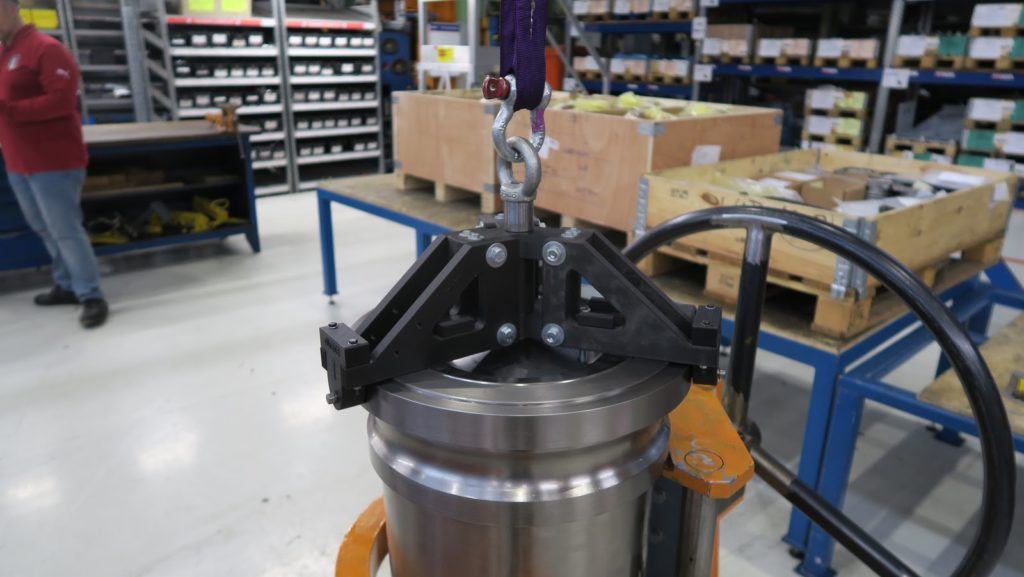
A lifting tool made by Wartsila printed on an X7 in Carbon Fiber.
The Markforged X7 is the most heavily outfitted of the firm’s continuous filament fabrication machines, capable of feeding continuous carbon or glass fiber material alongside chopped carbon-filled nylon to create reinforced fused filament fabrication (FFF)-style parts. Geometric freedom may be limited when compared to other systems, but part strength is high due to continuous or chopped fiber strands being printed along with your part. A nifty feature of the X7 is a built-in 3D scanner which makes a contour map that optimizes nozzle adjustments during the printing process. Markforged’s Eiger software still outperforms the rest of the industry and it is key to making it easy to print and manage X7s in shared spaces, labs, and production areas. The X7 costs around $69,000.
Stratasys J750 Digital Anatomy Printer, J700, J720, J850 and J55

Models for animation studio Laika printed on the J750.
The J750 from Stratasys is a PolyJet system that jets and cures a photopolymer. It can print color and gradient materials. Parts off of this machine are amazing and can be soft or hard, which can be used, for example, to replicate and simulate tissue and cartilage. Stratasys has released this system with industry and application-specific external research and materials that have been developed just for printing polymer anatomical models.
The company also offers J700 and J720 printers specific to the dental industry. The J850 is a more general system set up for design labs and shared services offering 3D printing for corporate customers. The J55 is meant to be an “entry-level” machine for a mere $100,000. The PolyJet family has a very high cost per part and the materials make manufacturing with them cost-prohibitive. But, if you want colorful, great-finish prototypes in-house, this family of printers will be an excellent choice. These things are perfect for digital anatomy in hospitals, the design centers of major automotive brands, large consumer electronics or fast moving consumer goods companies.
3ntr A2V4

One thing 3NTR machines are uniquely capable of doing is printing flexible and rigid FDM materials in one part. Here is a TPU and ASA component for Denso.
3ntr’s FFF systems are strong and tough, made for production from the ground up. With liquid-cooled printheads, 3ntr machines will see engineers will fall in love with their insides. We’ve heard great things from people using these things in series production as well. Print quality is not amazing, but reliability and repeatability are very high. These machines are born to live out a life on the concrete factory floors, built by a family firm, a brassiere manufacturer, in Oleggio near Milan.
Systems for High-Temperature Materials
Intamsys Funmat Pro 610 HT
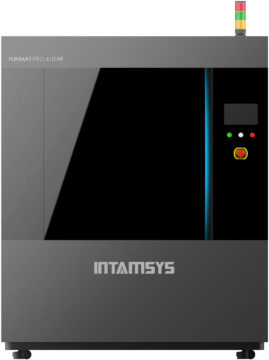
The Intamsys Funmat Pro 610 HT is a capable, high-temperature machine that is especially good with PEI. Intamsys has offered affordable high-temperature systems since inception. Not perfect, they nevertheless represent great value. Intamsys systems have become much easier to use over the past several years. Systems used to be a little rough around the edges. Now better user interfaces, controls, and designs mean that the newest systems not only look slicker but are easier to use as well.
Roboze Argo 500

Roboze’s Argo has a nozzle that can reach 450°C and a chamber temperature that can reach 180°C. The 500 X 500 X 500 mm build volume is accommodating; the vacuum bed works well and there is a preheating chamber for materials. With two independent geared extruders, these beltless 3D printers are much better than Roboze’s earlier offering. The Argo 500 also has a smaller sister the Argo 350. Roboze is also doing a lot of work on materials. While the printers are open, the company has done considerable optimization for its own ULTEM AM9085F, Carbon Polyamide, Carbon PEEK and PEEK offering.
3DGence Industry F420

A PEEK part with support, printed on a 3DGence F420.
3DGence has developed a remarkably replete offering and its printers are appreciated by users. Well-engineered and built, they are fast and reliable. The printer has four bays for heating materials and different optimal nozzles for different materials. 3DGence has also worked on software, coming out with a competent slicing package, which is local, and a cloud-based model and print management solution.
The company has also optimized its materials. Compared to other firms, 3DGence has done a lot of work on support material and the optimization of typically-finicky supports. The company offers a HIPS for ABS, ESM 10 which is a water-soluble support for PEEK that I still can’t really get my head around, and a water-soluble BVOH (butene-diol vinyl alcohol, try it!) for PLA. The company also sells a dryer and a support removal system, rounding out a very complete offering.
Minifactory Ultra
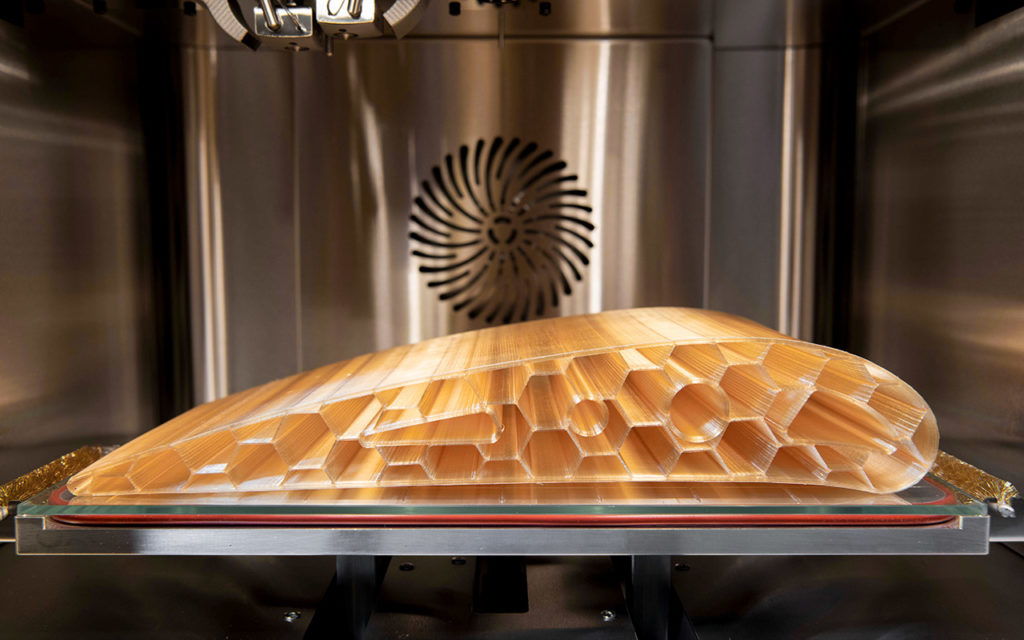
The Minifactory machines I’ve evaluated always do well. The small Finnish company builds them to high quality and high specifications. Now, the firm has added the Aarni Process Monitoring System to its offering, which allows you to display and collate data for monitoring, optimization, and quality control. Aarni can be used to certify parts and work with traceability systems. This really shows that the firm is conducting the smart engineering needed to offer high-end manufacturers a solution that they can use for critical parts.
AON3D M2 2020
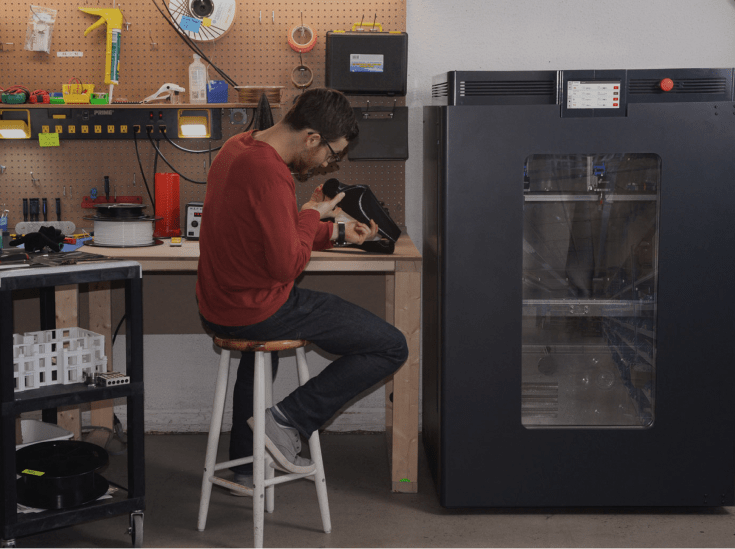
The AON3D M2 is a dual head high-temperature machine with low heat bleed in the chamber. It has dual independently moving tool heads and liquid cooling. The hot end runs at 470°C, while the heated bed reaches 200°C and the build chamber reaches 135°C. The build volume is 454 x 454 x 640 mm. Montreal-based AON doesn’t have a software offering (it uses Simplify3D) or focus as much on the ecosystem approach, as some of its competitors do.
Large-Scale Manufacturing of Fine and Highly Detailed Items
EnvisionTEC Perfactory P4K

e-shell material hearing aid shells on a Perfactory print platform.
The EnvisionTEC Perfactory is the granddad of industrial production systems. First on the market in 2002, this line of systems has made tens of millions of intermediates for jewelry and hearing aids. The current version is the P4K, which uses a DLP 4M projector and comes with new optimized materials for hearing aids, transparent parts and more durable parts. These things are simply un-killable and keep on working for years.
3D Systems Figure 4

The Figure 4 is a highly automated system with integrated post-processing. Not widely used at the moment, but early signs are very encouraging, especially for small parts at very high volume. Available with dental or jewelry-specific modules and in a Production or Modular variant.
Large-Scale Manufacturing of Tough End-Use Parts
EOS Integra P400
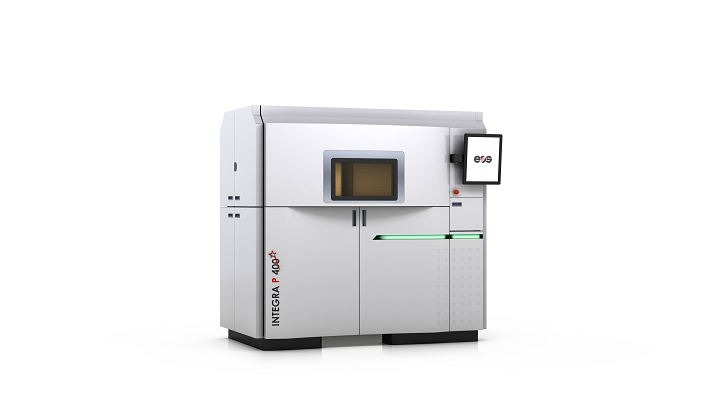
Rendering of Integra P 400 [Image: EOS]
Stratasys F900
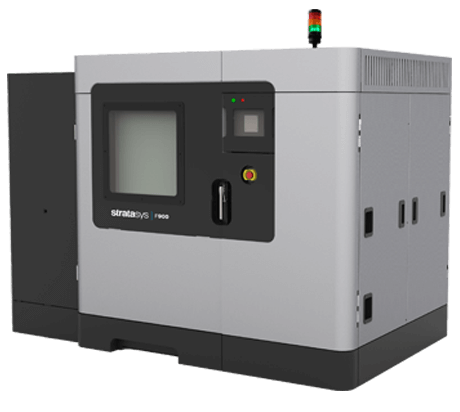
The Stratasys F900 should also be considered when looking at high-temperature machines. This is an extremely good system for FDM industrial parts, offering high reliability, repeatability and detail. Stratasys now has made moves to widen its materials offering through partnerships with Solvay and others, which should do much to address its limited materials when compared to the open printers on the market. It now has PEKK, ULTEMs, PPSF, Nylon, etc. for a total of 16 materials. At the same time, however, because it is so well-dialed into Stratasys’ own material offering, this is a great machine that works like a charm.
HP 5200

The HP 5200 now has polypropylene which will be a fantastic material for a lot of new applications. PA 11 and TPUs also make more possible. HP really is expanding its offering and materials at a considerable pace. Especially for large volume manufacturing, the company now offers a lot of value and is considerably more affordable at a cost per part.
You can find our 2019 Industrial 3D Printer Buying Guide here.
Subscribe to Our Email Newsletter
Stay up-to-date on all the latest news from the 3D printing industry and receive information and offers from third party vendors.
You May Also Like
Gorilla Sports GE’s First 3D Printed Titanium Cast
How do you help a gorilla with a broken arm? Sounds like the start of a bad joke a zookeeper might tell, but it’s an actual dilemma recently faced by...
Nylon 3D Printed Parts Made More Functional with Coatings & Colors
Parts 3D printed from polyamide (PA, Nylon) 12 using powder bed fusion (PBF) are a mainstay in the additive manufacturing (AM) industry. While post-finishing processes have improved the porosity of...
$25M to Back Sintavia’s Largest Expansion of Metal 3D Printing Capacity Since 2019
Sintavia, the digital manufacturing company specializing in mission-critical parts for strategic sectors, announced a $25 million investment to increase its production capacity, the largest expansion to its operations since 2019....
Velo3D Initiates Public Offering in a Bid to Strengthen Financial Foundations and Drive Future Growth
Velo3D (NYSE: VLD) has been among a number of publicly traded 3D printing firms that have attempted to weather the current macroeconomic climate. After posting a challenging financial report for 2023,...































